EC number 3.4.14.5 | Entrez 2191 | |
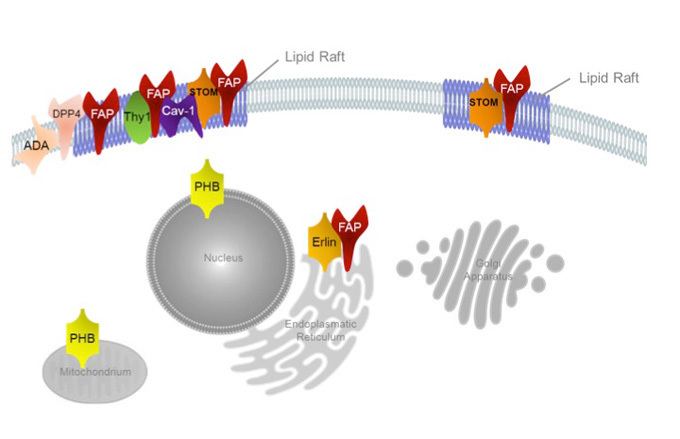 | ||
Aliases FAP, DPPIV, FAPA, SIMP, fibroblast activation protein alpha External IDs MGI: 109608 HomoloGene: 48282 GeneCards: FAP | ||
Fibroblast activation protein alpha is a 170 kDa melanoma membrane-bound gelatinase, protein that in humans is encoded by the FAP gene.
Contents
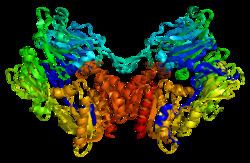
Function
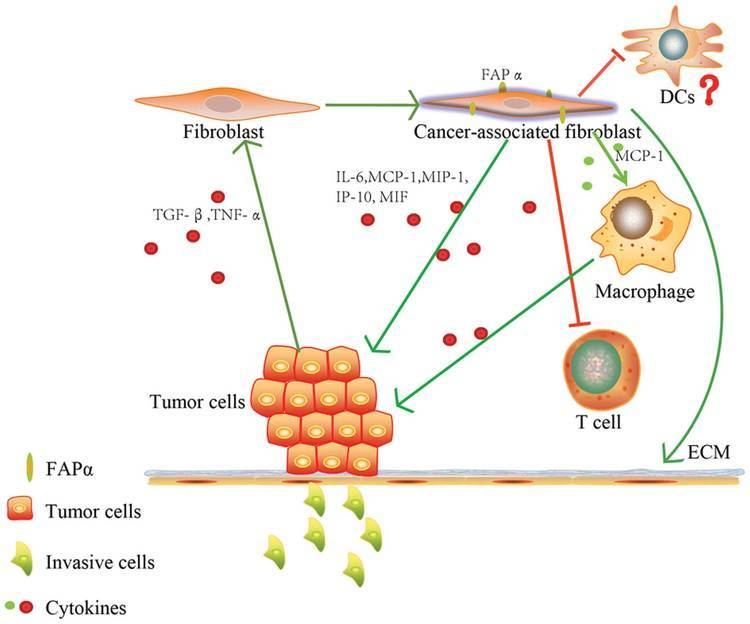
The protein encoded by this gene is a homodimeric integral membrane gelatinase belonging to the serine protease family. It is selectively expressed in reactive stromal fibroblasts of epithelial cancers, granulation tissue of healing wounds, and malignant cells of bone and soft tissue sarcomas. This protein is thought to be involved in the control of fibroblast growth or epithelial-mesenchymal interactions during development, tissue repair, and epithelial carcinogenesis.
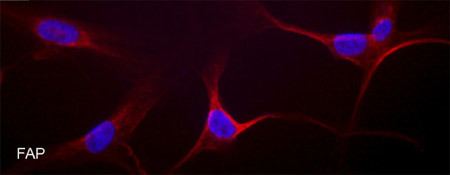
FAP, also known as seprase, belongs to the clan SC proteases and is a member of the S9B prolyl oligopeptidase subfamily. Other members of the S9B subfamily are DPPIV, DPP8 and DPP9. FAP is most closely related to DPPIV and they share about 50% of their amino acids.
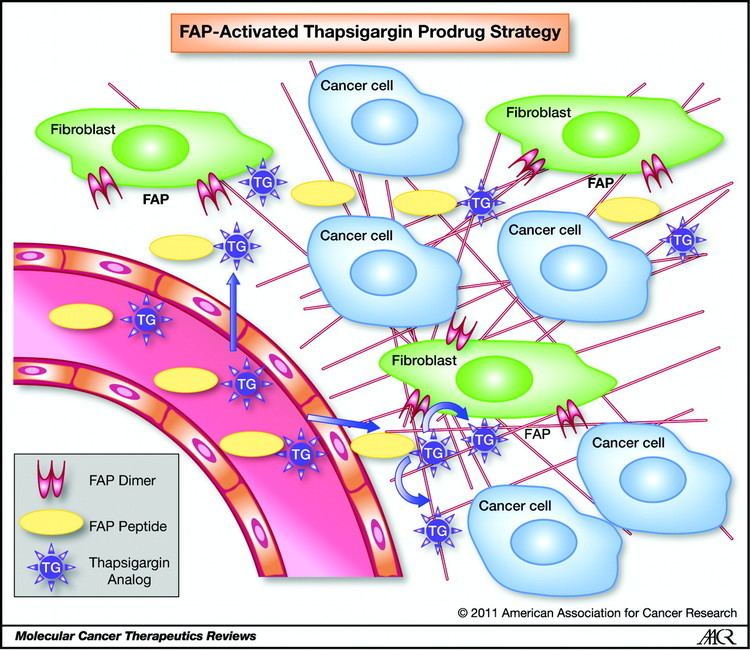
FAP is catalytically active as a 170kD dimer and has dipeptidase and gelatinase activity. Its gelatinase activity requires a glycine in P2 position.
As of April 2013 The endogenous substrates of FAP have not yet been identified.
Structure
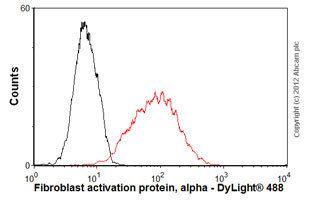
Fibroblast activation protein is a homodimeric integral protein with dipeptidyl peptidase IV (DPPIV)-like fold, featuring an alpha/beta-hydrolase domain and an eight-bladed beta-propeller domain.
Clinical significance
FAP expression is seen on activated stromal fibroblasts of more than 90% of all human carcinomas. Stromal fibroblasts play an important role in the development, growth and metastasis of carcinomas.
It has been shown that targeting FAP inhibits stromagenesis and growth of tumor in mice.
Talabostat is an inhibitor of FAP and related enzymes, for which clinical trials have been done, but further research is suspended.
Sibrotuzumab is a monoclonal antibody against FAP.
